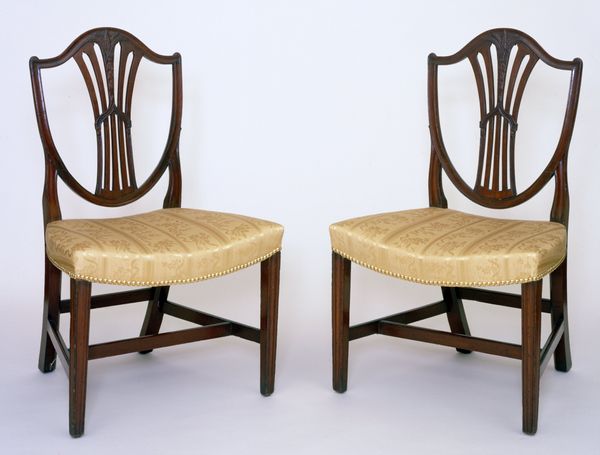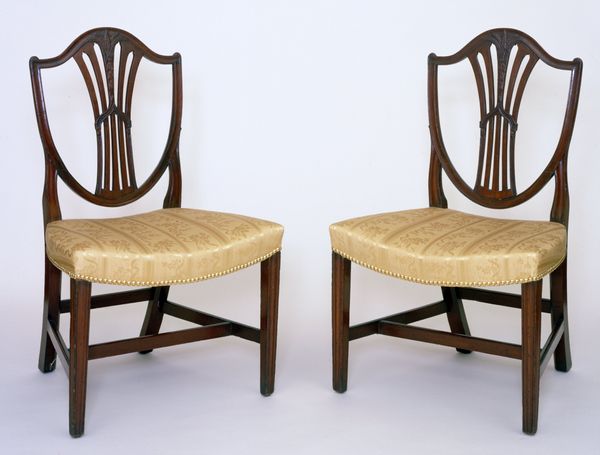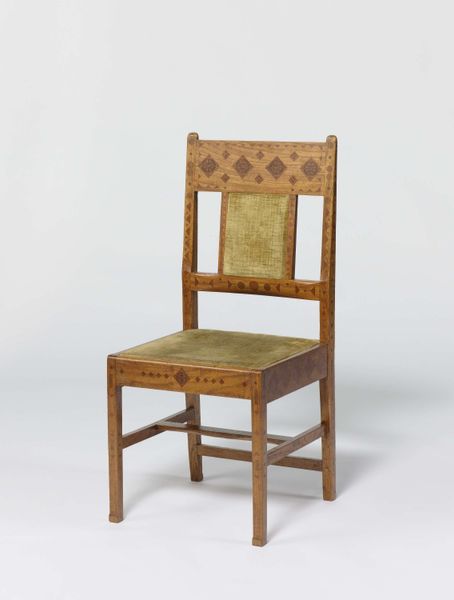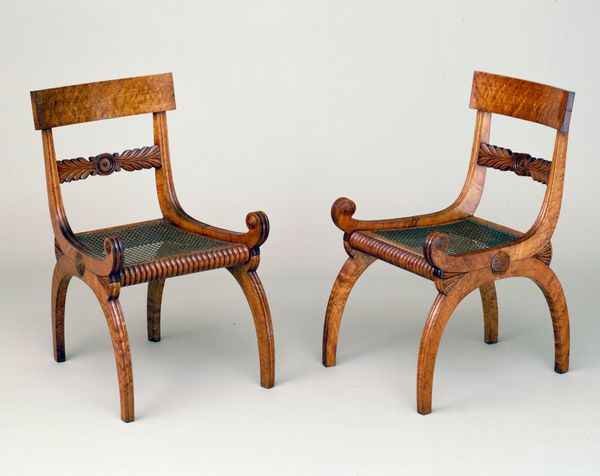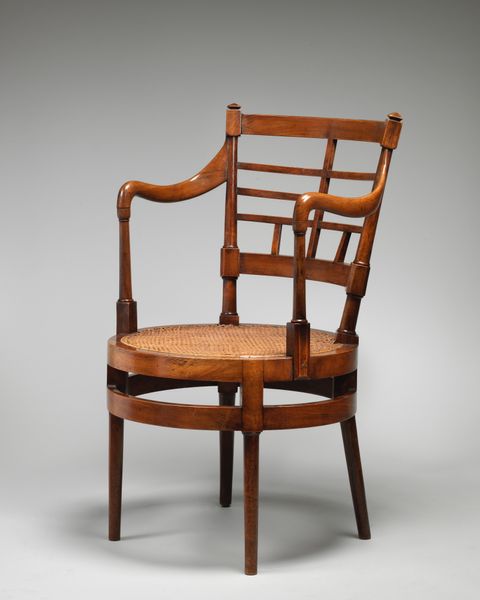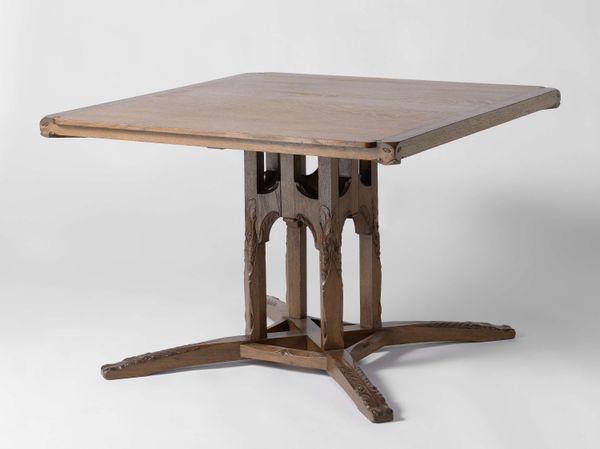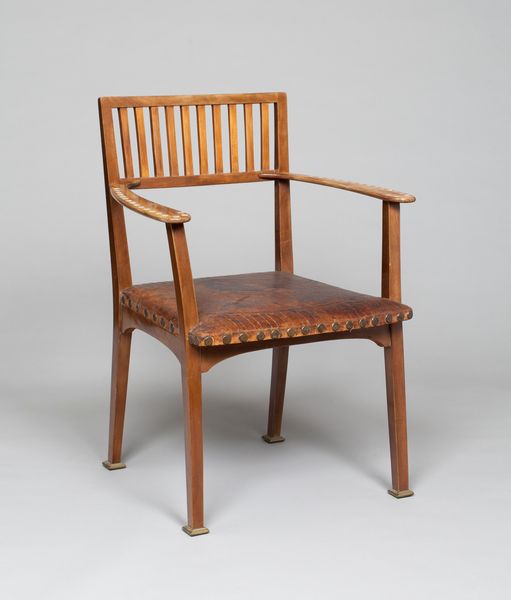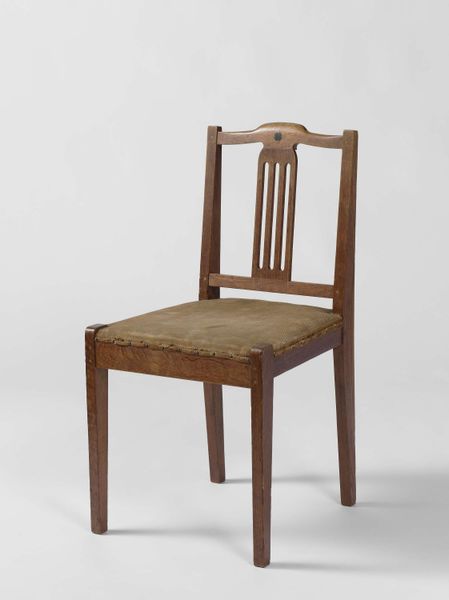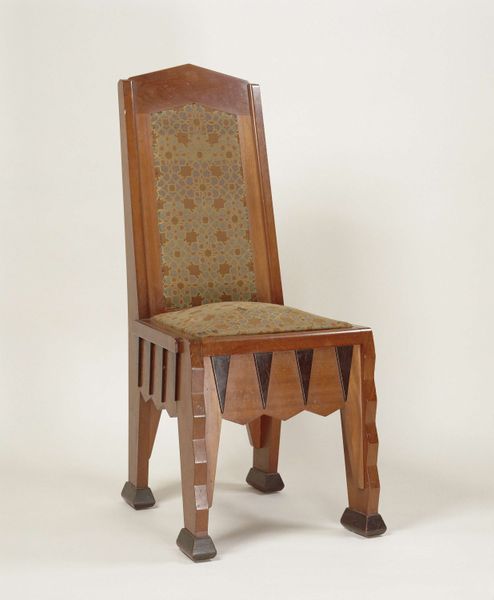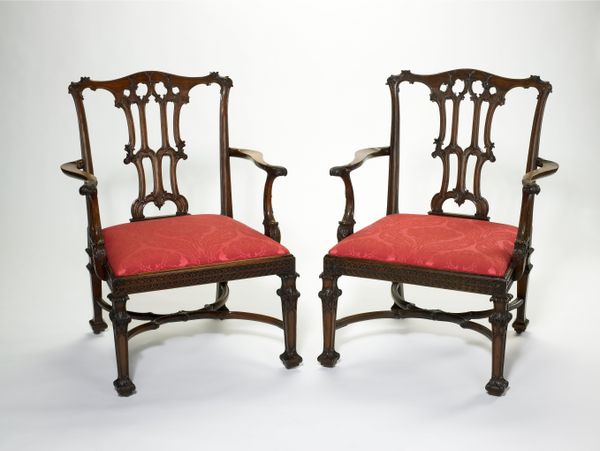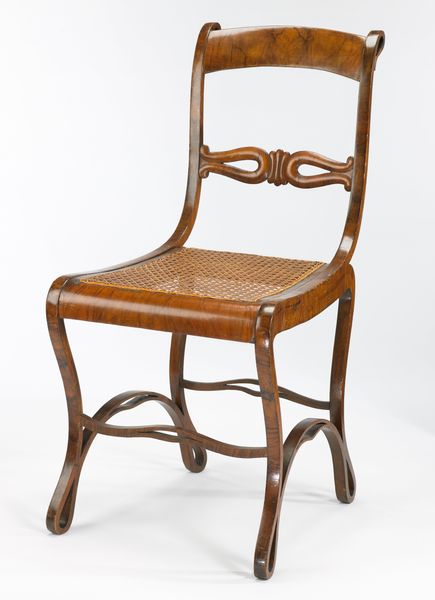
Ameublement van padoekhout, versierd met ingegrifte patronen en ingelegd met een tropische houtsoort 1899
0:00
0:00
wood
#
arts-&-crafts-movement
#
furniture
#
ceramic
#
architecture model
#
wood
#
decorative-art
Copyright: Rijks Museum: Open Domain
Curator: This is a striking dining set dating from 1899 by Theo Nieuwenhuis. The Rijksmuseum collection catalogue describes it as padoek wood furniture decorated with carved patterns and inlaid with tropical wood. What's your initial response? Editor: It feels incredibly solid and earthy. The proportions, especially the short legs on the table and the verticality of the chairs, create a grounded, almost heavy feel, despite the intricate carving. There is something incredibly satisfying in this balance. Curator: Indeed, this furniture represents a high point of the Dutch Arts and Crafts movement, known for its emphasis on handcrafted quality and ethical production. The choice of padoek, a reddish hardwood, highlights that commitment to natural materials. Editor: That ties into the political messaging of the movement. Sourcing consciously grown wood and supporting traditional techniques stood in direct opposition to industrial capitalism. Do you agree the simple diamond shapes act almost as political emblems? Curator: I see those more as reflecting a broader interest in geometric forms that was prominent across decorative arts at the time. The regularity offers a nice counterpoint to the more organic shapes in the tropical wood inlays. Think about its original context: it’s design for living but a lifestyle choice steeped in artistic and political intentions. Editor: That’s a fascinating observation. This furniture then, is designed not just for eating but for signaling adherence to certain principles and values. How was a set like this originally intended to shape a household? Curator: The deliberate design creates an atmosphere of handcrafted luxury, rejecting mass production in favor of bespoke creation. Editor: It suggests a communal, intimate dining experience, consciously removed from the factory lines shaping modern life outside the home. To gather around this table wasn’t simply to eat, but to share and reinforce those values. Curator: Precisely. Its function was as much symbolic as it was practical, reflecting aspirations to cultivate ethical, aesthetically refined living in a rapidly changing world. Editor: A very thoughtful perspective. I now see this furniture less as an inert object, and more like an assertion of intentional living. Thank you! Curator: You're most welcome! Hopefully this conversation provides insight into just one possible reading of this stunning example of Dutch craftsmanship.
Comments
No comments
Be the first to comment and join the conversation on the ultimate creative platform.
